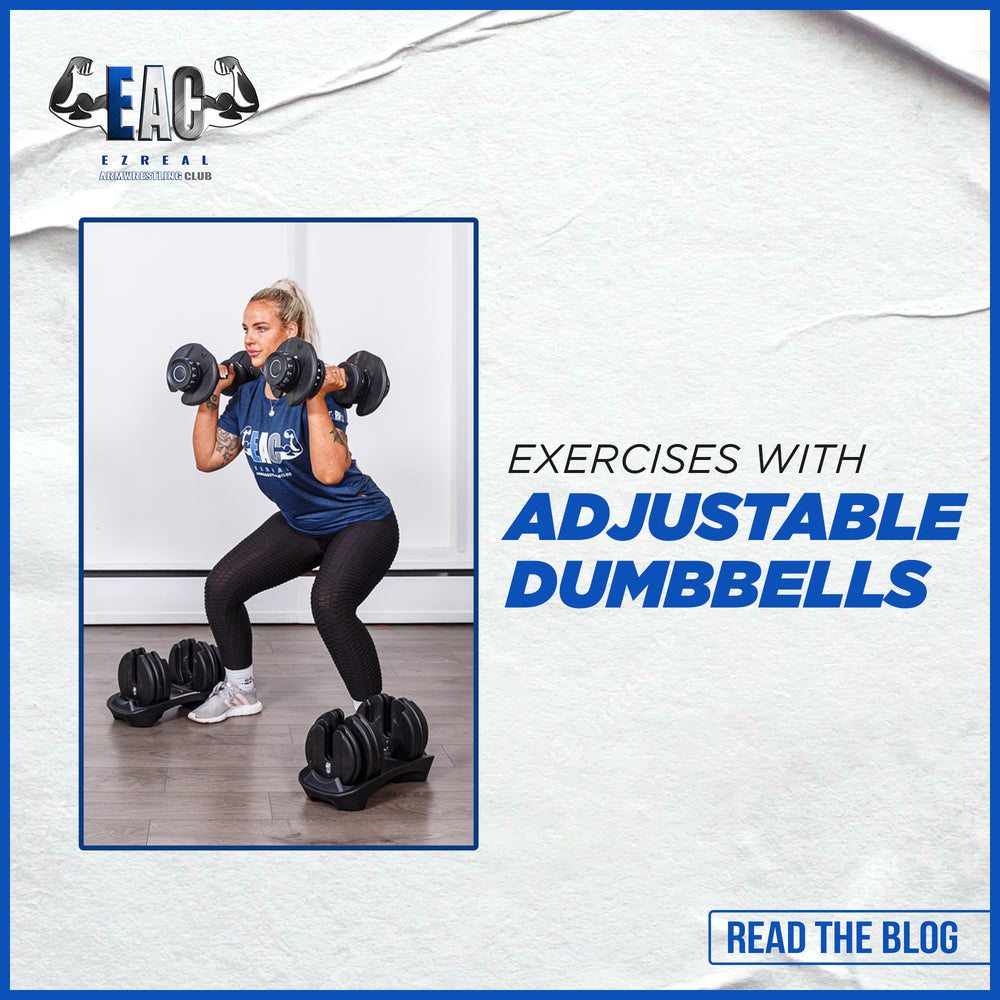
Exercises with Adjustable Dumbbells
7 Exercises with Adjustable Dumbbells
Dumbbell Romanian Deadlift

Why it works: RDLs are great for building the proper activation patterns in your hamstrings and glutes while strengthening your back—all of which are important at the start of a workout, which is why we place them here.
How to do it: Start with a light set of dumbbells. The form is especially key to getting the full benefit from the RDL; don’t think of the exercise as bending forward but rather as sitting back with your torso moving forward instead of staying upright. (Olympia, 2022)
Alternating Dumbbell Bench Press
Why it works: The dumbbell bench press challenges the shoulders to stabilise more than a barbell bench. The extra pulse at the end also works the shoulders.
How to do it: Lying face up on a bench, holding dumbbells outside your shoulders and with palms facing your thighs, lift both dumbbells over your chest. Keeping one arm straight, lower the other dumbbell, touch the outside of your shoulder, and push it back up. At the top of the movement, push farther with both hands as if trying to punch the ceiling. (Olympia, 2022)
Goblet Squat

Why it works: This full-body manoeuvre challenges the quads as it takes the pressure off your back, making it more accessible than a traditional barbell squat. The counterbalance with the weight in front of the body allows you to sit back more quickly, encouraging proper form.
How to do it: Hold a dumbbell with both hands under your chest. Squat by pushing your knees out so your elbows can move in between them. Squat as low as you can and return to starting position. (Olympia, 2022)
Dumbbell Skullcrusher

Why it works: Though best known as a triceps exercise, this also builds coordination between the tris and upper back.
How to do it: Lie supine (face-up) on a bench and lower the dumbbells until your elbows are bent 90 degrees. Then pull back to starting position. (Olympia, 2022)
Dumbbell Chest Flye

Why it works: Few movements so effectively challenge your pecs while also hitting the shoulders and biceps. The flye is also a great movement after the skull crusher because you don’t have to switch positions.
How to do it: Lying face-up on a flat bench, holding dumbbells over your chest with elbows slightly bent, palms facing each other. Separate the hands and lower the dumbbells to the sides until you feel a stretch in your chest. At the bottom of the movement, your palms should be facing the ceiling. Reverse the motion until you reach the starting point, a movement some liken to “hugging a barrel.” (Olympia, 2022)
Farmer’s Walk

Why it works: This improves overall core strength. There’s a reason farmers don’t need to lift weights in the gym—they get all the training they need from their daily work.
How to do it: While holding dumbbells, walk 10 yards out and 10 yards back. (Since this is an at-home workout, this might involve walking between multiple rooms.) Don’t hunch over. Keep your shoulder blades pulled back and down, and fire your glutes as you walk. This can be a challenging move at first, but you’ll be surprised how quickly you can walk further or increase the weight. (Olympia, 2022)
One-Arm, One-Leg Bentover Row

Why it works: Not only does this challenge you to work on each side independently, as with a traditional one-arm row, but you work your hamstrings while inevitably lowering the dumbbell deeper.
How to do it: Stand on one leg, grasping a dumbbell rack or bench in front of you with one hand. Drop your chest and lift the leg opposite your free hand to create a “T” with your body. (Note: Be careful doing this in a confined at home space, so you don’t accidentally kick anything.) Grab a dumbbell with your free hand, pull it to the side of your waist, and lower it. Do ten reps on one side and then repeat with the opposite arm and leg. (Olympia, 2022)
Ready to get started? Shop the EAC Adjustable Dumbbell set HERE


